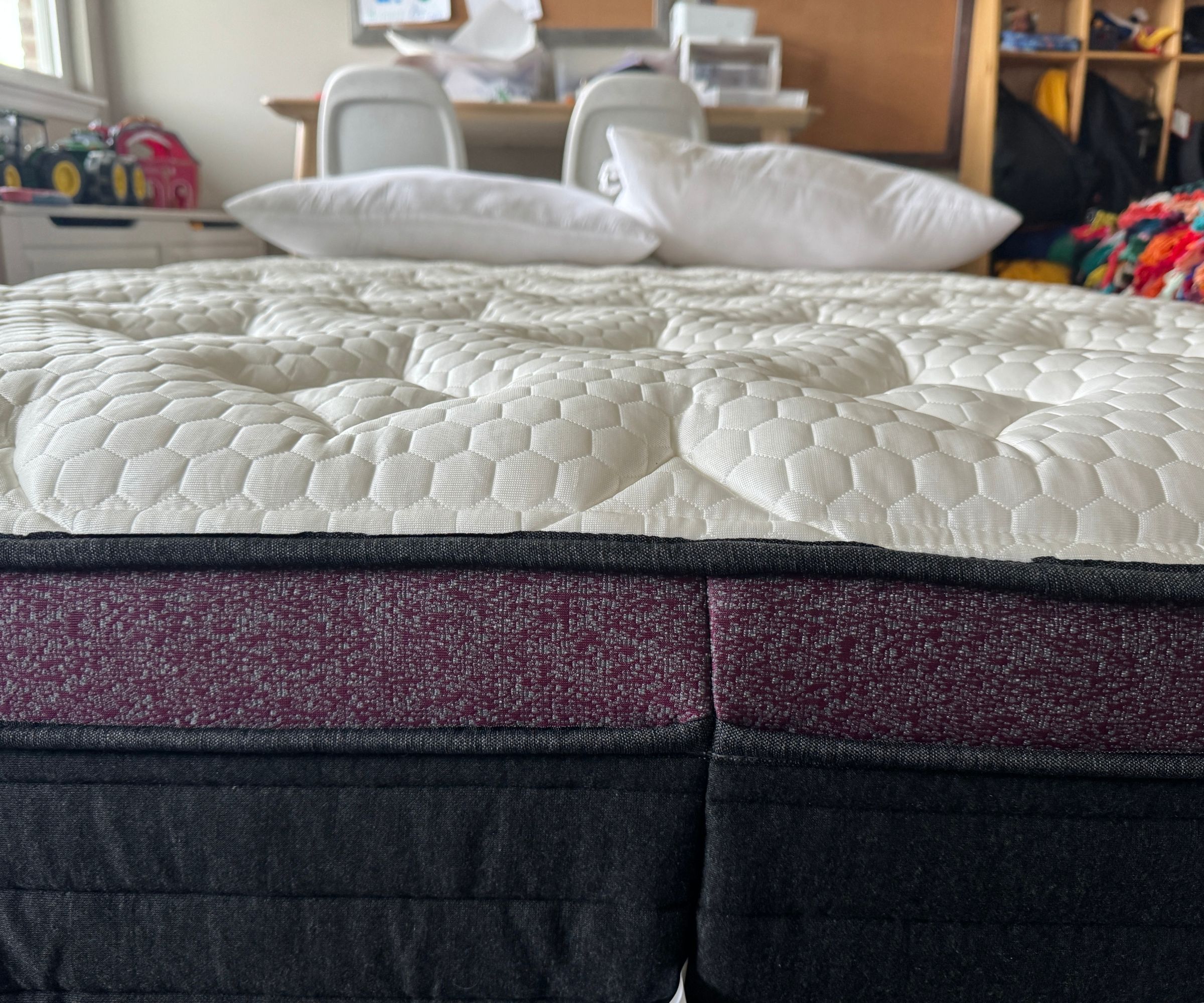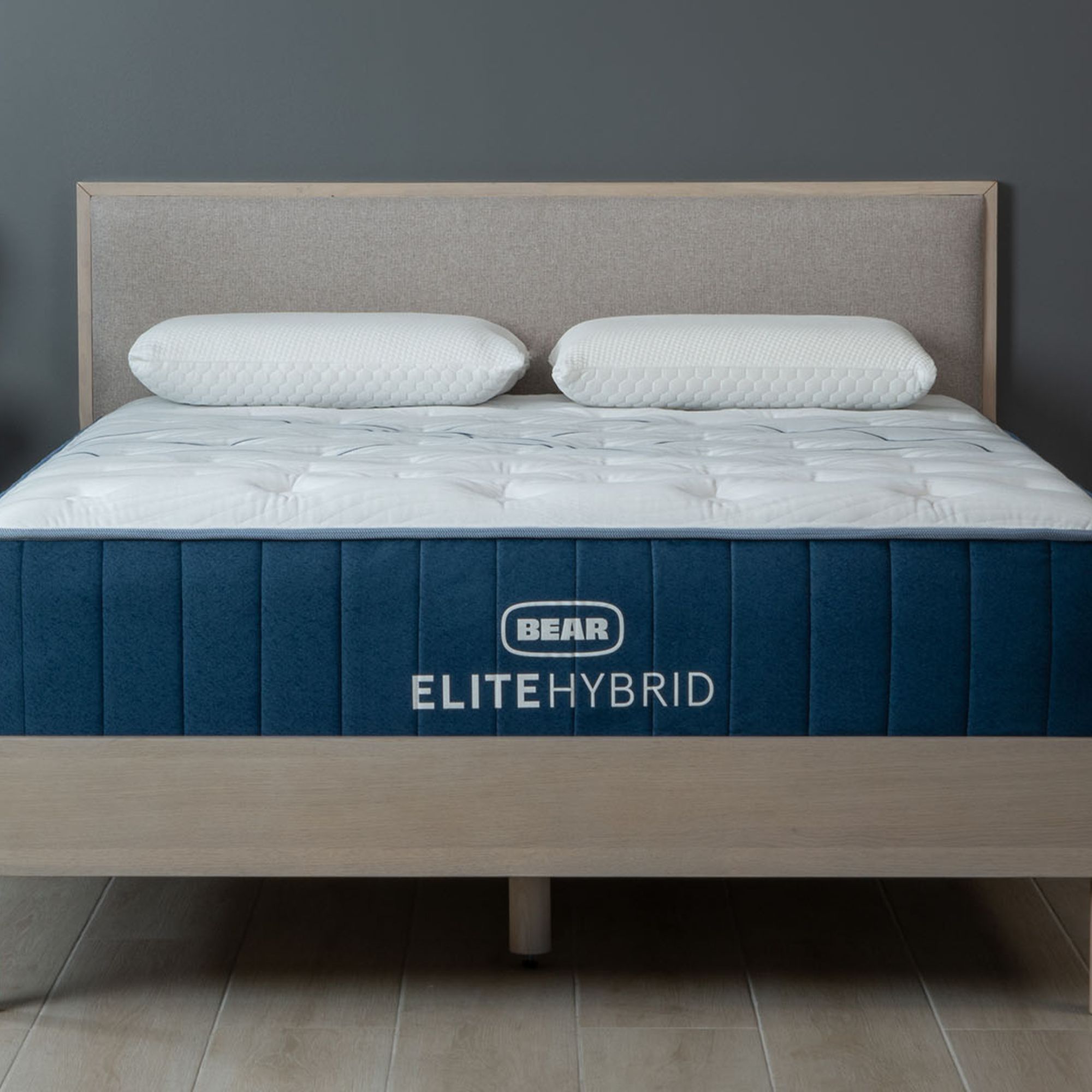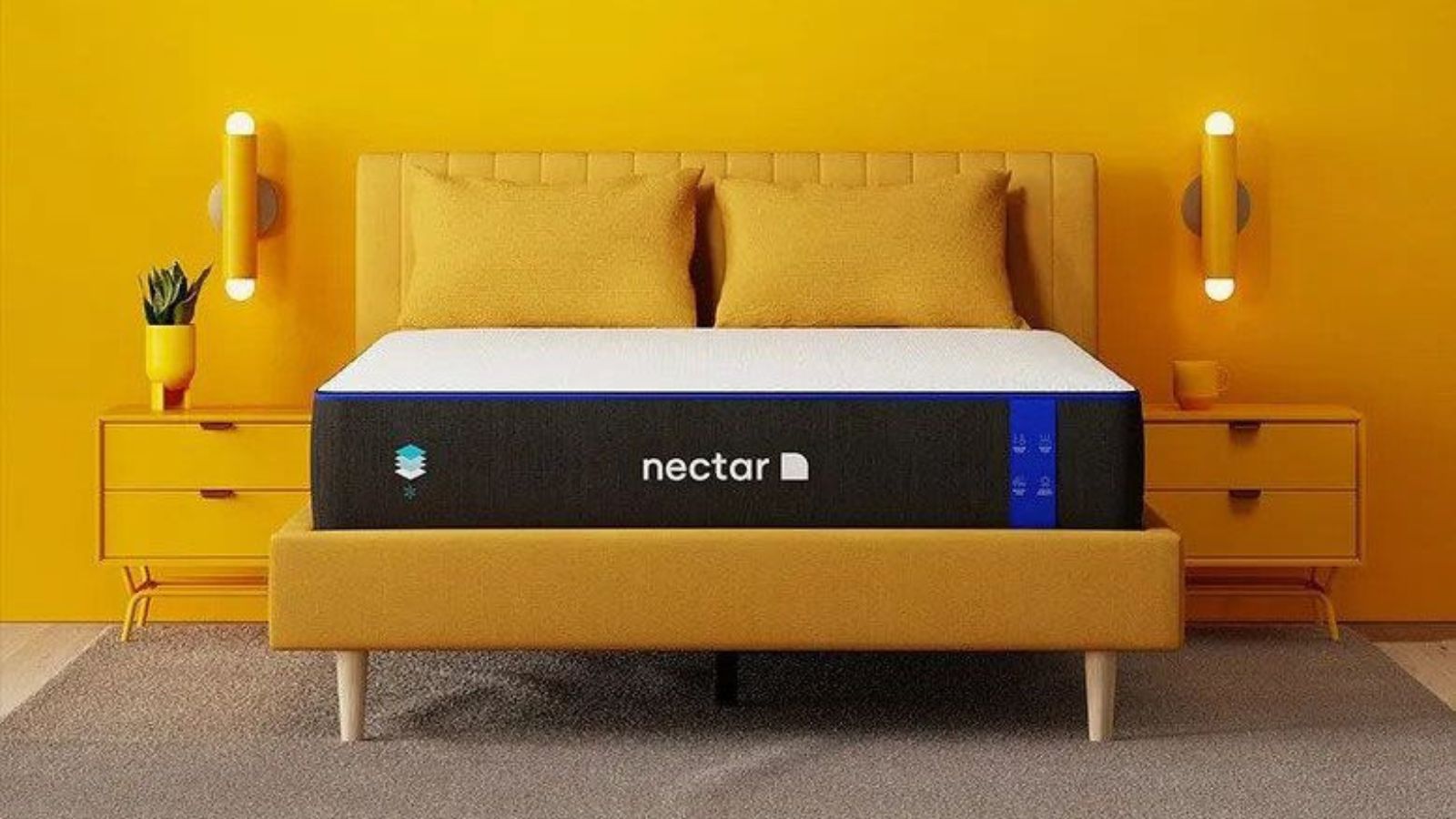What is a plush mattress? Your expert guide
I've outlined the pros and cons of a plush mattress to help you find the right balance between comfort and support


Back when I slept on an old-fashioned innerspring, I used to dream of a plush mattress. I imagined thick layers of pillowy foam that contoured to my curves and let me sink into my mattress, until I felt totally weightless.
The truth of the matter is a little more complicated. I still love sinking into a plush mattress for an hour or two of relaxation, but I can't sleep without sufficient support. I've learned the hard way that even a plush mattress needs a solid base to bear my weight and ease my aches and pains.
Out of all the mattress types, a plush mattress is most suitable for side sleepers who need a bit of give to cushion their hips, knees, neck, and shoulders. If you sleep on your back or side, you'll benefit from a firmer surface. I asked mattress makers and medical professionals to help me explain the pros and cons of a plush mattress and identify the best alternatives.
What is a plush mattress?
As H&G's resident sleep writer, I know that the best mattress carefully balances comfort and support. I've combed through our back catalog of reviews to bring you plush mattresses that are soft yet sufficiently supportive to maintain proper spinal alignment.
What is a plush mattress?

If you've ever tried shopping for a mattress, whether online or in-store, you've probably come across firmness ratings. Some mattress brands rate the firmness of their beds on a scale of 1 to 10, where 1 is the softest and 10 is the firmest. A plush mattress would fall around a 3 or a 4. More often, though, you'll read that a mattress feels Soft, Medium, Medium-Firm, or Firm. A plush mattress is just another word for a soft mattress.
Your average plush mattress is filled with foam and boasts all the benefits of a memory foam mattress. A plush mattress is made to mold to the shape of your body and take the weight off your pressure points. I'd expect to find a plush mattress in a high-end hotel or luxury spa for rest and relaxation during a short-term stay.
Plushness is more about feeling than filling, which means that a plush mattress can come in many forms. If you add enough foam, any mattress can be a plush mattress: you might find a pillow-top hybrid mattress or even an innerspring mattress that feels plush to the touch.
What are the pros of a plush mattress?

When I asked licensed chiropractor Dr. Matt Tanneberg whether a plush mattress was a good or a bad thing, he couldn't give a straight answer. That's because the ideal mattress firmness is totally subjective and varies from sleeper to sleeper. Dr. Matt says it all 'depends on what you like in a bed, as well as the position you most commonly sleep in'.
'People who sleep on their sides typically do best with plush mattresses as the extra cushion takes pressure off the major contact points of side sleeping: your hip and your shoulder,' Dr. Matt reveals. That makes a lot of sense: a side sleeper needs a softer mattress so that their joints don't get crushed against a firmer surface.

Dr. Matt is a sports chiropractor and certified strength and conditioning specialist. He owns and operates the Body Check Chiropractic & Sports Rehabilitation practice in Scottsdale, Arizona, where he works with elite athletes to improve their posture and ease their pain.
If you're a light sleeper, or you share a bed with a pet or partner, you might appreciate the motion-isolating properties of a plush mattress. All that thick foam works to absorb movement, which would otherwise bounce across the bed and disturb your sleep in a spring mattress.
Funnily enough, a plush mattress might be a good option for a cold sleeper and cooler climes, for similar reasons: thick foam tends to trap heat, which can keep you warm as you sink into the softer surface.

This bed is soft enough to cushion your neck, shoulders, hips, and knees, yet sufficiently supportive to maintain the natural alignment of your spine. Comfortable and cooling, it's the best hybrid mattress we've ever tested.
You can find more detail in our Bear Elite Hybrid Mattress review.

For hotel-quality comfort at home, spring for the Helix Dusk Luxe Mattress. The plush pillow top lends a lovely sinking feeling, just enough to take the weight off your joints but not so much that you start to feel swallowed up by the mattress.
You can find more detail in our Helix Dusk Luxe Mattress review.

This is a flippable mattress: one side is soft and plush, but still supportive, while the other is firmer and less flexible. To switch between the sides, all you need to do is grab hold of the sturdy handles around the edge of the bed. I'd recommend the Layla Hybrid Mattress for side sleepers who like a bed with a bit of give.
You can find more detail in our Layla Hybrid Mattress review.
What are the cons of a plush mattress?

Although you might appreciate the sweet relief of a plush mattress for a few nights in a hotel, it might cause more problems in the long term. You need deep support, every night, to maintain proper spinal alignment. If you insist on sleeping on a plush mattress, make sure the pillowtop rests upon supportive steel coils to bear your weight.
Andy Bloom owns and operates his own mattress store: he has done for more than 30 years. In that time, he's helped countless customers to find their dream beds. As a rule, he wouldn't recommend a plush mattress: 'While some people with back pain may find relief on a plush mattress, others may require a firmer mattress for better support. Generally, we find that medium-firm to firm mattresses are better for people with back pain.'

Andy owns and operates the Home Mattress Center in Wilmington, Delaware. It's a family-run business, where Andy has worked for more than thirty years, helping countless customers to find their mattress match.
Final thoughts
You might have made it all the way to the end of this article on window-shopping mode: you'd love to get a plush new bed, but you just can't afford it. You could always invest in the best mattress topper, instead. All it takes is a three-inch layer of foam to totally transform your sleep experience for a fraction of the price of a new mattress.
Sign up to the Homes & Gardens newsletter
Design expertise in your inbox – from inspiring decorating ideas and beautiful celebrity homes to practical gardening advice and shopping round-ups.

Emilia is our resident sleep writer. She spends her days tracking down the lowest prices on the best mattresses and bedding and spends her nights testing them out from the comfort of her own home. Emilia leads a team of testers across America to find the best mattress for every sleep style, body type, and budget.
Emilia's quest to learn how to sleep better takes her all around the world, from the 3Z mattress factory in Glendale, Arizona to the Hästens headquarters in Köping, Sweden. She's interviewed luxury bedding designers at Shleep and Pure Parima, as well as the Design Manager at IKEA. Before she joined Homes & Gardens, Emilia studied English at the University of Oxford.
-
 Courtney Love's historic loft combines rock star luxury with raw New York bones – it's on the market for almost $9.5 million
Courtney Love's historic loft combines rock star luxury with raw New York bones – it's on the market for almost $9.5 millionThe singer's former SoHo home features exposed brick walls, original wooden columns, a gas fireplace, and high ceilings – take the tour
By Hannah Ziegler
-
 Triangular shaped garden ideas – landscape designers share 9 ingenious ways to redesign your corner plot
Triangular shaped garden ideas – landscape designers share 9 ingenious ways to redesign your corner plotExpert tips for planning, planting and finessing a triangular shaped plot, so you can savour the space year round
By Jill Morgan
-
 How we test mattress toppers – H&G's expert review process explained
How we test mattress toppers – H&G's expert review process explainedHere's everything you need to know how we test mattress toppers for pressure relief, thermoregulation, motion isolation, and edge support
By Emilia Hitching
-
 I tried the Nectar Premier Hybrid Mattress – it's so much better than their basic models
I tried the Nectar Premier Hybrid Mattress – it's so much better than their basic modelsCompared to the Nectar Classic Foam Mattress, the Nectar Premier Hybrid boasts far superior edge support and thermoregulation
By Millie Hurst
-
 What's the best pillow position for the best night's sleep? Sleep experts weigh in
What's the best pillow position for the best night's sleep? Sleep experts weigh inBecause sometimes it's the small things that can have a big impact on your sleep quality
By Michele Ross
-
 5 signs you're sleeping on a bad mattress − how to spot the red flags
5 signs you're sleeping on a bad mattress − how to spot the red flagsI asked medical professionals and sleep scientists how to spot the signs you're sleeping on a bad mattress and when it's time to upgrade
By Emilia Hitching
-
 What is a futon mattress? Your expert guide
What is a futon mattress? Your expert guideFor flexible comfort and short-term stays, there's nothing like a futon mattress − I've searched the web to bring you the best fold-out beds
By Emilia Hitching
-
 Platform bed vs box spring – what's the difference and which is best for you?
Platform bed vs box spring – what's the difference and which is best for you?Unsure whether a platform bed or a box spring is right for your set up? We break down these two mattress foundation options
By Alison Barretta
-
 What is a platform bed? Everything you need to know about this stylish mattress support
What is a platform bed? Everything you need to know about this stylish mattress supportLearn how this low profile bed frame can elevate the look of your bedroom
By Alison Barretta
-
 How long do memory foam mattresses last?
How long do memory foam mattresses last?I spoke to mattress testers and medical professionals to learn more about the lifespan of a memory foam mattress – plus, how to extend it
By Emilia Hitching